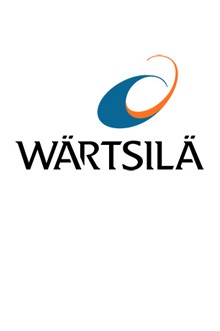

Saudi Arabia’s cement industry requires uninterrupted production to keep pace with demand, which means the power supply has to be secure. Repeated renewals of Wärtsilä’s long-term Operation and Maintenance (O&M) agreements are clear evidence of how this security of supply has succeeded, despite the challenges.
Saudi Arabia’s cement industry is the largest on the Arabian peninsula with an integrated capacity of more than 70 million tons per year. The obvious driver for the sector is the country’s booming construction industry, which recorded growth of 3.3% in cement sales in 2019 and 20.7% growth in 2020. The ambitious Saudi Vision 2030 plan has extensive impact on the construction sector and is expected to lead to even higher demand for cement. During the past 40 years, Wärtsilä has supplied and installed self-generating captive power plants to eleven of Saudi Arabia’s seventeen cement producing companies, and is well positioned to continue its success in powering this industry.

In November 2020 Cement producer Umm AlQura Cement Co renewed Wärtsilä O&M agreement for second time, for 5 years, based on uninterrupted performance of its 47 MW plant in Taif City © Wärtsilä Corporation
Far from grid in harsh ambient conditions
As in many other countries, cement factories in Saudi Arabia are mostly found in remote locations. This means that connecting to the nation’s electrical grid is an expensive option. Instead, cement production has to be powered by electricity from captive generating plants owned and operated by the company itself. The upside of this set-up is that the companies have total control over the supply, which is important given that a reliable source of energy is essential to their operations. Furthermore, self-generated electricity is often less expensive than purchasing it from the utility.
Saudi’s captive power plants powering cement production face harsh ambient climatic conditions. Increased temperatures lower the density of the inlet air, while variations in humidity influence an engine’s burn-rate characteristics. This has the same effect as retarding the time of ignition, thus reducing the thermal efficiency. Another challenge is that the availability of a convenient water supply, which is essential in many power generating solutions, may be scarce.
Meeting the fluctuating load demands required for producing cement is another potential hurdle to be overcome. A reliable and constant supply is essential to maintain production. The Wärtsilä solutions based on internal combustion engines are designed to meet sudden demand variations and load fluctuations, even when operating in extreme ambient conditions. They also feature a closed-loop cooling system, which means that they have almost zero water consumption.

Alexandre Eykerman, Energy Business Director, Middle East, Wärtsilä.
Long-term service agreements – a matter of efficiency, reliability and cost
Of the Wärtsilä power plants generating electricity for Saudi cement works, six are supported with Wärtsilä O&M agreements. The fact that in recent months Wärtsilä has renewed four long-term O&M agreements with Saudi cement producers, is a reflection of the value that such agreements can deliver.
“There is a growing trend towards outsourcing high skill-level jobs to O&M providers. Meeting the localisation requirements imposed by the Saudi government can also be met by training the customer’s employees to carry out routine operation and maintenance duties under supervision by the O&M provider,” says Alexander Eykerman, Energy Business Director, Middle East, Wärtsilä.
The right scope and timing of maintenance is an essential way to support efficiency and reliability – and also to optimise cost. Reducing the cost of production per ton is a major concern for all companies in the cement industry’s competitive environment. The Saudi government helps in this by subsidising the cost of fuel, be it crude oil, heavy fuel oil , light fuel oil, or gas. However, each company is licensed to purchase and consume only a specific fuel allocation from the government, so efficient consumption of this allocation is necessary for controlling costs.
The captive plant needs, therefore, to be operated and maintained as efficiently as possible to benefit from the subsidised fuel prices. The efficiency of the Wärtsilä engines plays a key role in optimising operations, but maintenance procedures are equally important, since retaining plant availability is essential to ensure smooth productivity throughout the facility.
“In general, outsourcing the operation and maintenance to the equipment provider, providing they have the capabilities and resources to undertake this responsibility, is less expensive over the long-term than self-operating the power plant,” Alexandre Eykerman says.
The application of digital technology solutions has radically changed and improved the way in which maintenance is carried out. Remote support is an obvious example, while expertise in analysing data is essential. Sensors on the engines provide continuous data on their condition, and this data is then transmitted in near real-time to technical specialists. Should anomalies or potential malfunctions be detected, the specialists can relay preemptive advice to the on-site maintenance team. This not only avoids interruptions, but also indicates ways to improve efficiency. Asset diagnostics also optimises the planning of engine overhauls, since they can be arranged based on actual need rather than on a pre-set number of operating hours.
“The person responsible for availability and reliability needs to know what to monitor and how to analyse the data to be able to connect the different dots and come up with recommendations. This requires analytical skills and years of experience,” Eykerman points out.
Renewals say everything
Renewals of O&M agreements is a signal of customer satisfaction with the level of services being provided, as they look for optimised power generation and maintenance planning to reduce costs and help in achieving their business goals. The Safwa Cement, Umm AlQura Cement, Najran Cement and Northern Region Cement plants in Saudi Arabia have all been under long-term Wärtsilä O&M contracts since they were commissioned.
Northern Region Cement Company (NRCC) recently renewed its O&M agreement once again. Its 62 MW captive power plant located in Turaif has nine Wärtsilä 18V32 engines. The scope of the agreement is typical of what such an agreement can provide: 24/7 availability of manpower at the plant, remote support by specialists working from Wärtsilä’s Expertise Centre in Dubai, technical support by field service engineers, genuine OEM spare parts, and the professional execution of all operating and maintenance procedures. Wärtsilä’s local Saudi Arabia team is located close to the plant.
Najran Cement Company has a main plant at Sultana, in an area with no connection to the nation’s electrical grid, and a standalone cement grinding unit at Aakfa. Thirteen Wärtsilä 18V32 engines provide 91 MW of total generating capacity for these captive power plants. The O&M agreement with Wärtsilä, which is very similar to that of NRCC, was recently renewed for another term of three years.
Flexible engine power plants promote renewable energy use
Saudi government construction projects are expected to increase over the coming few years, which implies an increase in power demand by cement producers. This could open the door to further optimisation in power generation by introducing renewable energy and energy storage.
As of 2018, the level of renewable sourced energy in the Saudi power system was negligible. Oil accounted for 42% and natural gas for 57.8% of the fuel used for electricity production. Nevertheless, the government has published its commitment to becoming carbon neutral, with 50% of electricity to be produced from solar and wind sources, by 2030.
The challenge posed to power generators by wind and solar is that their supply is unpredictable. Power plant flexibility is, therefore, essential to ensure a constant and reliable electricity supply. Here again, internal combustion engine technology comes to the rescue. For instance, the Wärtsilä engines can be stopped and re-started to reach full output within just a few minutes. “This flexibility makes the introduction of renewables extremely viable for Saudi cement producers,” Eykerman concludes.
Learn more:
Wärtsilä in Saudi Arabia: Youtube video Helping Saudi Arabia transform



